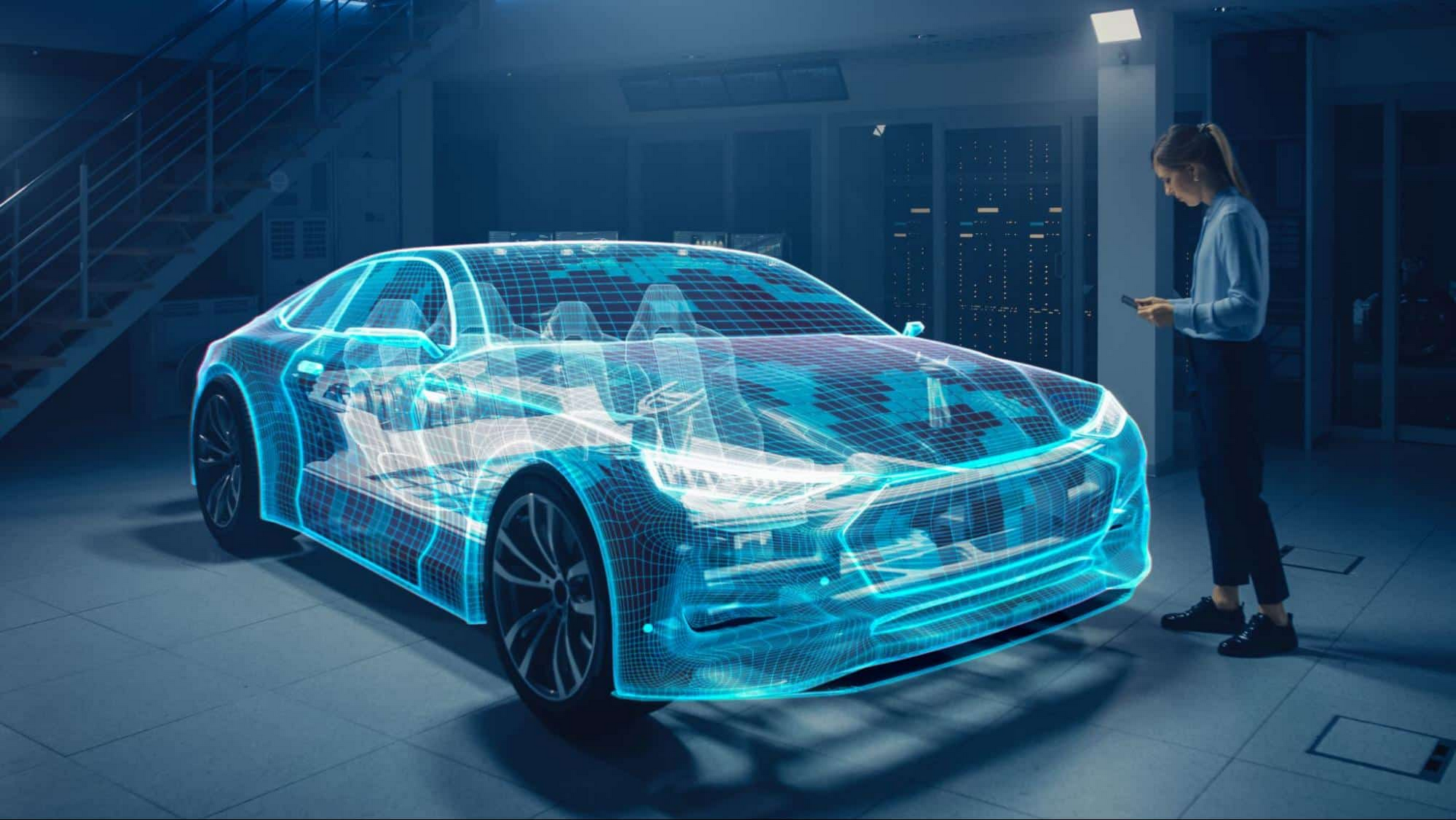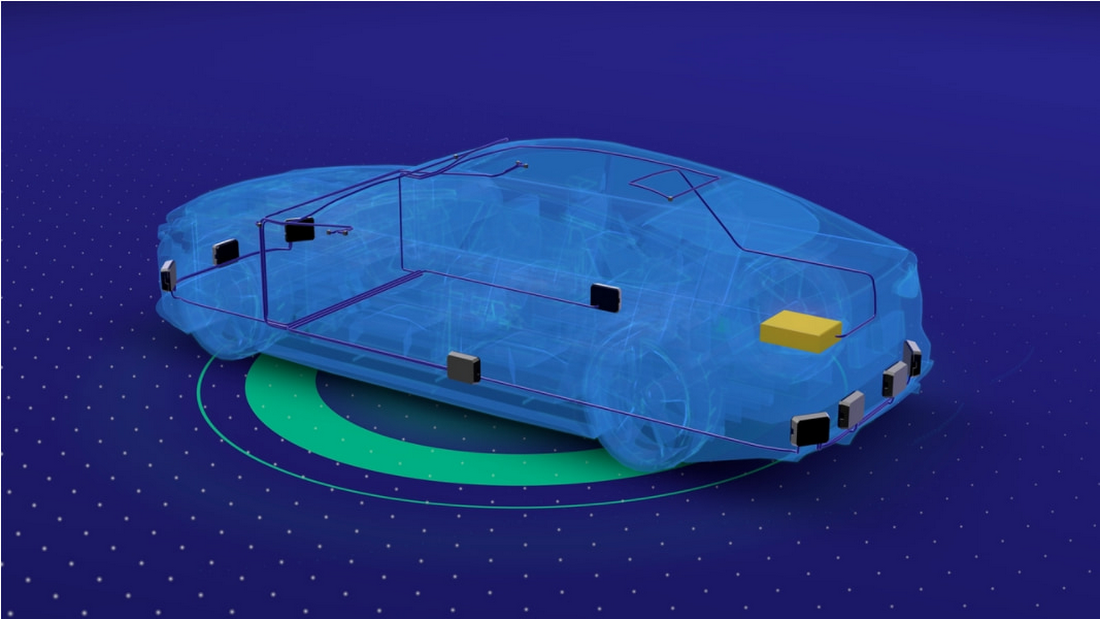Revolutionize those engines: How cloud-based high performance computing and AI are changing automotive and aerospace design and manufacturing

Matthias Breunig
Director, Global Automotive Solutions
Designing and building better cars and planes with AI, data analytics and high performance computing in the cloud.
When you look at a car—four wheels, a hood, red tail lights—or a plane—two wings, tiny windows, decorative tail fins—it’s amazing how much and how little has changed over a century of transportation innovation.
Now, both the automotive and aerospace industries are undergoing one of the greatest transformations since their inceptions. And what’s so striking about these epochal changes is how they are at once so digital and so physical. While cloud, AI, high-performance computing, and other advanced technologies have been busier and busier transforming every industry, whether finance or logistics, shopping or gaming, most of this innovation has been bringing things like our bank branches and leisure activities onto smaller screens and faster apps.
The changes afoot in automotive and aerospace are likewise about size and speed, but they are uniquely focused on continuing to advance how we move, better, faster, safer, and more sustainably, around the real world.
Volkswagen has invested $3 billion (so far) in its automotive software unit, CARIAD, since launching 18 months ago. GM is increasing its share in Cruise, and Ford has partnered with semiconductor manufacturer GlobalFoundries to work on R&D for chip design—the first time a car manufacturer has taken a direct investment in a chip company. It’s clear that technology plays an important role in the transformation of these companies. In aviation, Airbus has tech incubator Airbus BizLab, Lufthansa has its Innovation Hub, and Alaska announced a new incubator fund, to name a few examples.
When you combine advanced manufacturing techniques with the cloud, artificial intelligence, high performance computing, computer-aided design and engineering, and data analytics, you have all the building blocks for transformation. Factories are made more efficient. Supply chains can be optimized. Cars and planes are lighter and stronger and perform better.


Making this shift isn’t easy
For years now, organizations have used computer-aided design (CAD), computer-aided engineering (CAE), and generative design to optimize the design process. These tools can drastically reduce the need for physical prototypes and practical tests such as impact, fatigue, or failure in the automobile industry; increasing fuel efficiency of jet engines with thermodynamic modeling; simulating air bag deployment in cars to maximize safety; and blade off testing for certification of aircraft engines. The latest advances are using AI to go beyond, and instead CAE now often looks at whole systems and how different parts of it can be optimized to perform under certain conditions.
Jumping into the software game is becoming essential for a wide cross section of companies, but there are few successful cases of non-software companies building software businesses and many notable failures.
, McKinsey & Co.


The main challenge when designing an automobile, aircraft engine, or electronic product with CAE is that it can take hours if not days to simulate conditions and outcomes with standard computer processing. And then even longer to run simulations of how all the parts work together in certain conditions, such as safety compliance scenarios or optimizing aerodynamics for energy efficiency.
Historically, CAE for designing complex products has been performed with expensive and power-hungry on-premises high-performance computing clusters. That’s been changing with a more efficient network that has decreased the latency between the cloud and the office. Auto manufacturers like Nissan and Toyota are now designing vehicles with high performance computing running in the cloud.
The difference between using personal workstations for high performance compute (HPC) versus cloud-based solutions to perform simulations can be the difference between weeks to get a solution, and hours. For instance, the LEAR Corporation, which makes automotive seating and electrical systems, was able cut its entire simulation time in half using Google Cloud partner ANSYS applications, according to an article in Engineering.com. RJM International, which makes industrial burners for large combustion plants and generators, was able to cut simulation time by 86%. Maker of heating systems Modine Manufacturing cut its simulation time to days instead of months.
One interesting example of designing better airplane parts and manufacturing processes with the use of high performance computing and AI comes from the U.S. Department of Energy’s (DOE) Argonne National Laboratory. In collaboration with GE Research, EWI, and GKN Aerospace, Argonne researchers are using HPC and AI to develop a new, “hot brew—the process of friction stir welding, a common ingredient needed to manufacture airplane components.”
“If you’re trying to brew the best cup of coffee, you can spend several hours fiddling with the many settings on the best machines,” said Argonne computational scientist Prasanna Balapraka of the machine learning process running on high performance computing, which is called DeepHyper. “In trying to make airplane parts, we can avoid this by using machine learning, which gives us the ability to learn from a handful of example settings and identify the best one from a set of a billion possible configurations.”
Google Cloud’s high performance computing solutions have been used in a variety of manufacturing and design processes. Our partners include Rescale, which offers more than 700 high performance computing applications including those for automotive design and simulation, and Ansys which specializes in simulation, including automotive use cases.
Data modernization and AI optimize the manufacturing process
The automotive and aerospace industries are using AI in a variety of meaningful ways. In design and development, the use of HPC, generative design, and simulation aim to make better performing and more efficient machines. In manufacturing the use of AI, the cloud, data modernization, the Internet of Things, digital twins, and robotics using AI techniques like computer vision are beginning to fundamentally change how cars and planes are made.
On the road, autonomous capabilities like driver- and lane-assist, smart-braking and driver risk assessment, and driver monitoring are becoming commonplace features (and are all precursors to the eventual autonomous, self-driving vehicle) in newer models. In the air, both Boeing and Airbus are using AI to advance autonomous flight.
Groupe Renault, an international automotive group with more than 40 manufacturing sites across the world, has been using data modernization and AI to improve its factory performance in line with the principles of Industry 4.0. Groupe Renault partnered with Google Cloud in 2020 and by 2021 had transformed its data operations through the use of BigQuery and other tools. The use of AI and intelligent analytics has helped Groupe Renault optimize costs and supply chain and manufacturing efficiency, and production quality.
Ford is also using Google Cloud to improve the manufacturing process. In a partnership announced last year, Ford will use Google Cloud’s machine learning and AI capabilities to accelerate modernization of its product development, manufacturing and supply chain management, including using vision AI for manufacturing, employee training and more reliable plant equipment performance.
We're gaining strong insights from the data that will help us implement predictive and preventive actions and continue to become even more efficient in our manufacturing plants.
Jason Ryska, Director Manufacturing Technology Development, Ford Motor Company.
For companies in the automotive and aerospace industries, every day is a race against competitors. The goal is to be first in product quality and performance, first in manufacturing efficiency, and first to market with technical innovations. Efforts like these are increasingly driven by AI and high performance computing in the cloud—built to crunch through massive amounts of data at high speeds—and hopefully deliver something something transformative not just in the lab or on a screen but to propel people around the world.
Join our event “Driving Factory Floor Transformation with Google Cloud” on-demand to explore how manufacturers are optimizing production and increasing throughput, uptime and quality, with data and AI in the cloud.




